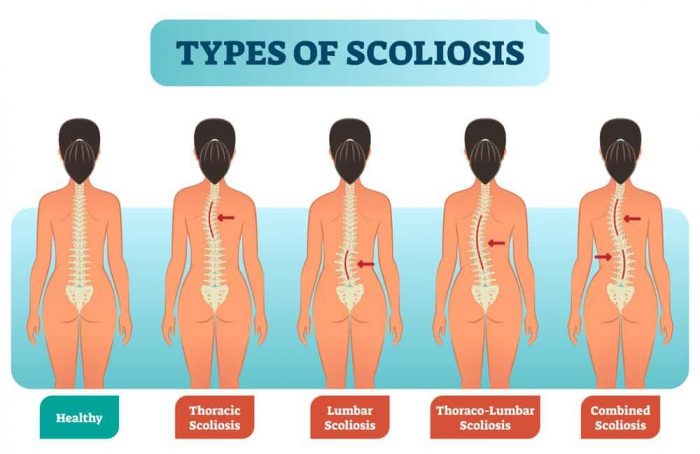
Scoliosis is a condition that causes curvature in the spine. Most people experience scoliosis as adolescents, but it can develop at any age. The most common types include thoracic and lumbar scoliosis. In addition to these two types of scoliosis, there are other types that may be present with one or both of these conditions. If you have been diagnosed with scoliosis, it is important to know the different types and understand how they differ from one another to ensure your best treatment plan is chosen based on all factors involved in your condition.
Thoracic Scoliosis
Thoracic scoliosis is the most common type of spinal curvature. In this case, your spine curves to the right or left and may be accompanied by other abnormalities such as a rotated rib cage or uneven shoulders. Treatment options include wearing a brace that will straighten out your back over time.
Lumbar Scoliosis
Lumbar scoliosis is different from other types of scoliosis because it usually affects the lower back, or lumbar region. The curvature of the spine in this type of scoliosis often causes pain and discomfort in the lower back. The cause of lumbar scoliosis is not known but some factors may increase your risk for developing it:
- Being overweight or obese
- Having a family history of spinal deformities (e.g., rheumatoid arthritis, osteoporosis)
If you think that you have lumbar spinal deformity, see your doctor right away so that they can diagnose it properly and start treatment right away.
Thoraco-Lumbar Scoliosis
Thoraco-lumbar scoliosis or scoliosis with junctional spinal deformity is caused by a curvature of the spine that affects the thoracic and lumbar regions. The curvature is present in the concave side of the spine and manifests as an abnormally shaped vertebrae between two normal ones, resulting in an overall abnormal curve shape. The thoracic spine is curved forward, while the lumbar spine is curved backward. This creates an imbalance with respect to muscle strength between these areas, which can lead to pain or discomfort if left untreated over time
Combined Scoliosis
Combined scoliosis is the most common type of scoliosis. It’s a combination of thoracic and lumbar curvatures, with the thoracic curve usually being larger than the lumbar curve.
We hope this article has helped you understand the different types of scoliosis. If you feel like your condition is not being properly diagnosed, or if your doctor has told you that they don’t know what type of scoliosis it is, we suggest seeking out another opinion from a specialist such as an orthopedic surgeon or physiatrist who has experience treating spinal deformities.
